
Dr. Wang's research on concurrent coastal disasters is highlighted by UNDRR.
We conduct world-leading research aiming to build a sustainable and resilient coastal and offshore community.
To gain insights of the coastal and offshore disasters and provide effective solutions for disaster mitigation.
Develop cutting-edge technologies for harnessing ocean renewables and conducting associated risk assessments.
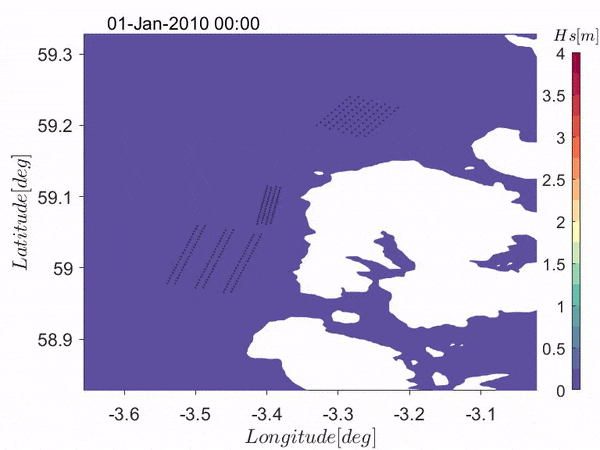 Harnessing ocean wave energy through Wave Energy Converter (WEC) farms presents a promising pathway for ocean renewable deployment. Yet, accurately modelling the interactions between WEC arrays and the wave field remains a critical challenge, particularly in assessing energy extraction effects on wave climate and coastal processes. This study presents a novel coupling methodology for spectral wind wave models to accurately simulate the dynamic interactions between ocean waves and WEC farms, incorporating Power Take-Off (PTO) effects.
Harnessing ocean wave energy through Wave Energy Converter (WEC) farms presents a promising pathway for ocean renewable deployment. Yet, accurately modelling the interactions between WEC arrays and the wave field remains a critical challenge, particularly in assessing energy extraction effects on wave climate and coastal processes. This study presents a novel coupling methodology for spectral wind wave models to accurately simulate the dynamic interactions between ocean waves and WEC farms, incorporating Power Take-Off (PTO) effects.
 The present model offers a useful tool for assessing WEC farm performance as well as their environmental impacts. This work initiates new research on coupling phase-averaged spectral wave models with the state-of-the-art time-domain Wave Structure Interaction (WSI) models. By enabling a more realistic representation of PTO dynamics, the proposed framework supports improved forecasting of wave energy extraction efficiency and its effects on marine environments, contributing to sustainable ocean renewable deployment.
The present model offers a useful tool for assessing WEC farm performance as well as their environmental impacts. This work initiates new research on coupling phase-averaged spectral wave models with the state-of-the-art time-domain Wave Structure Interaction (WSI) models. By enabling a more realistic representation of PTO dynamics, the proposed framework supports improved forecasting of wave energy extraction efficiency and its effects on marine environments, contributing to sustainable ocean renewable deployment.
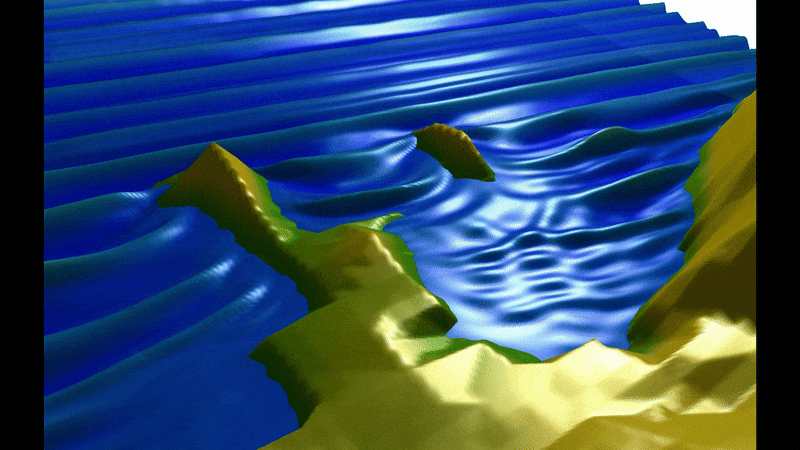 The collision between human and ocean in coastal region has been escalated recently. The human’s coastal activities are under unprecedented threats of various coastal hazards. Among them, Coastal Rogue Waves (CRW) are exceptionally large waves that can cause damages to coastal infrastructures due to their large impact forces, or drowning incidents by engulfing people into the sea.
The collision between human and ocean in coastal region has been escalated recently. The human’s coastal activities are under unprecedented threats of various coastal hazards. Among them, Coastal Rogue Waves (CRW) are exceptionally large waves that can cause damages to coastal infrastructures due to their large impact forces, or drowning incidents by engulfing people into the sea.
 This project aims to gather compelling evidence using cutting-edge wave data acquisition technology. By leveraging real-life data and employing both probabilistic and deterministic approaches, the generation mechanisms of CRWs will be comprehensively investigated through numerical simulations. The outcomes of this research will shed light on the underlying nonlinear physics of CRWs, providing new insight into improving beach safety management and rescue practices.
This project aims to gather compelling evidence using cutting-edge wave data acquisition technology. By leveraging real-life data and employing both probabilistic and deterministic approaches, the generation mechanisms of CRWs will be comprehensively investigated through numerical simulations. The outcomes of this research will shed light on the underlying nonlinear physics of CRWs, providing new insight into improving beach safety management and rescue practices.
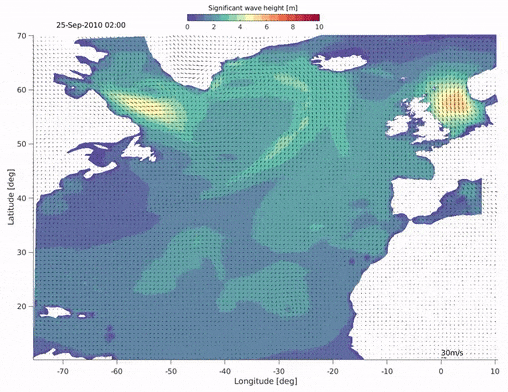 Lead by Prof. Qingwei Ma at City, University of London, UK, this project aims to develope a new generation modelling suite, combining machine learning techniques, for the survivability of wave energy converters in marine environments. The WavE-Suite project creates a new collaboration with leading academics from Imperial College, University of Edinburgh, University of Bath, Cardiff University, Indian Institute of Technology (IIT) Madras, Shanghai Jiao Tong University, and leading WEC developers, including Mocean in Scotland, CorPower Ocean in Sweden, Guangzhou Institute of Energy Conversion (GIEC) in China and BiMEP in Spain.
Lead by Prof. Qingwei Ma at City, University of London, UK, this project aims to develope a new generation modelling suite, combining machine learning techniques, for the survivability of wave energy converters in marine environments. The WavE-Suite project creates a new collaboration with leading academics from Imperial College, University of Edinburgh, University of Bath, Cardiff University, Indian Institute of Technology (IIT) Madras, Shanghai Jiao Tong University, and leading WEC developers, including Mocean in Scotland, CorPower Ocean in Sweden, Guangzhou Institute of Energy Conversion (GIEC) in China and BiMEP in Spain.
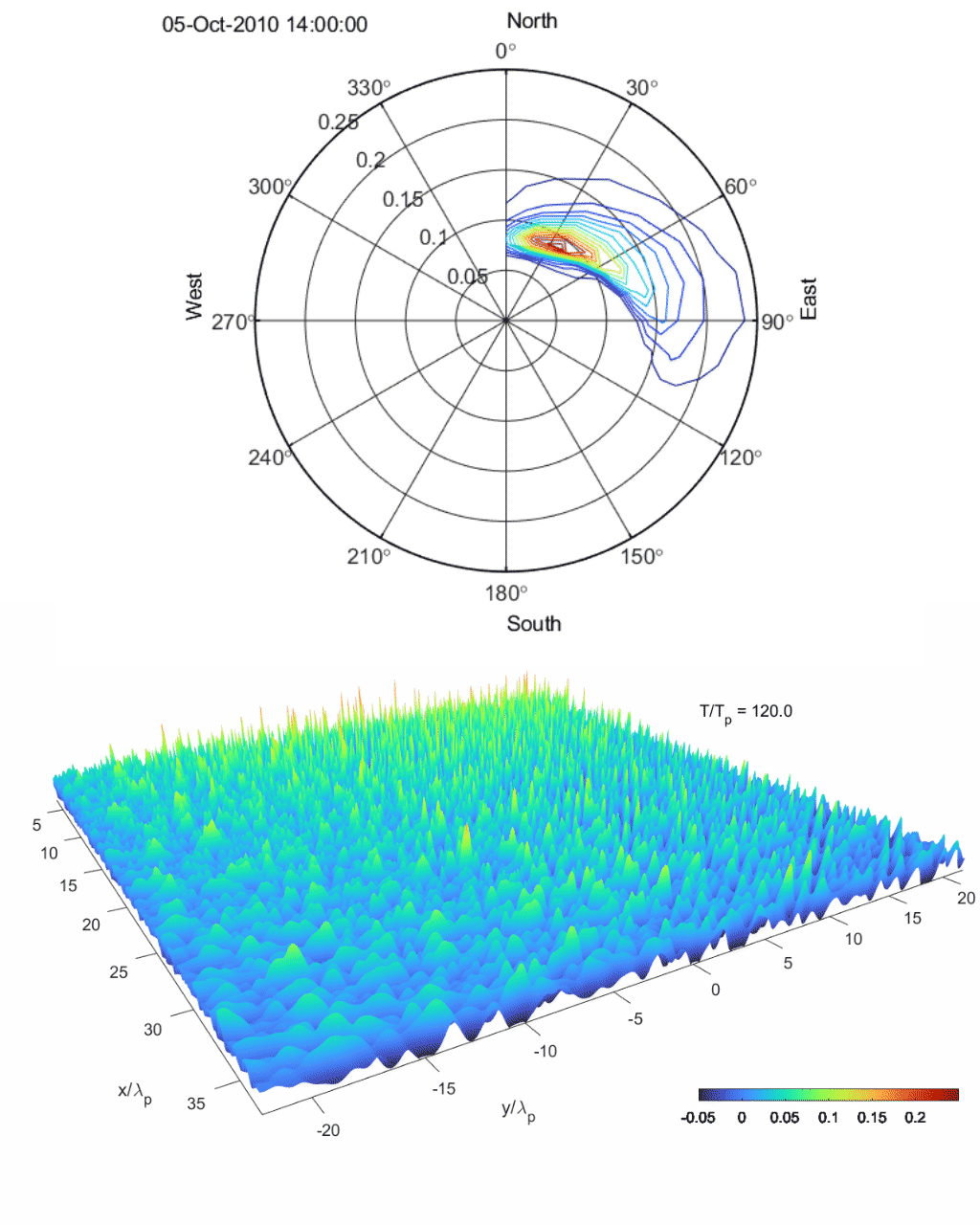 Follow the page for more updates.
Follow the page for more updates.
 One of the challenges associated with effective and reliable design of WECs and OWTs is the lack of tools for making survivability assessments under extreme sea conditions. The problem itself involves many key physics on a variety of scales, ranging from wind wave generation on regional scale, and nonlinear wave-wave and wave-current interactions on large scale, to wave breaking and turbulence on local scale.
One of the challenges associated with effective and reliable design of WECs and OWTs is the lack of tools for making survivability assessments under extreme sea conditions. The problem itself involves many key physics on a variety of scales, ranging from wind wave generation on regional scale, and nonlinear wave-wave and wave-current interactions on large scale, to wave breaking and turbulence on local scale.
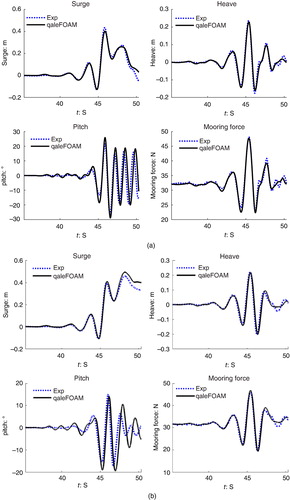 Conventional approaches relying on CFD software are computationally expensive, hence they are practically restrictive for being applied to this iterative design process. This project aims to develop an efficient numerical tool by combining several state-of-the-art wave and flow models to tackle this task.
Conventional approaches relying on CFD software are computationally expensive, hence they are practically restrictive for being applied to this iterative design process. This project aims to develop an efficient numerical tool by combining several state-of-the-art wave and flow models to tackle this task.
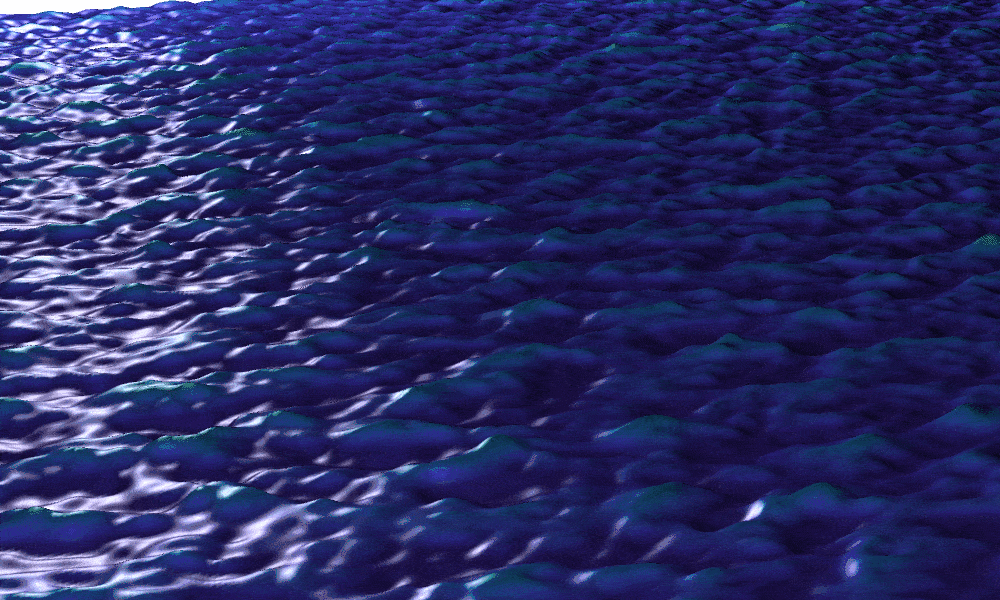 Extreme ocean waves impose substantial threats to human's oceanic activities. Maritime casualties are reportedly to be in connection with encounter of exceptionally large waves, such as rogue (freak) waves. Further insights are still demanded to explain their sudden appearances in open seas. Due to their unpredictability, the study area needs to cover hundreds of kilometers under hours of uninterrupted observations. One effective way is to reproduce such realistic random sea conditions in fully nonlinear numerical simulations.
Extreme ocean waves impose substantial threats to human's oceanic activities. Maritime casualties are reportedly to be in connection with encounter of exceptionally large waves, such as rogue (freak) waves. Further insights are still demanded to explain their sudden appearances in open seas. Due to their unpredictability, the study area needs to cover hundreds of kilometers under hours of uninterrupted observations. One effective way is to reproduce such realistic random sea conditions in fully nonlinear numerical simulations.
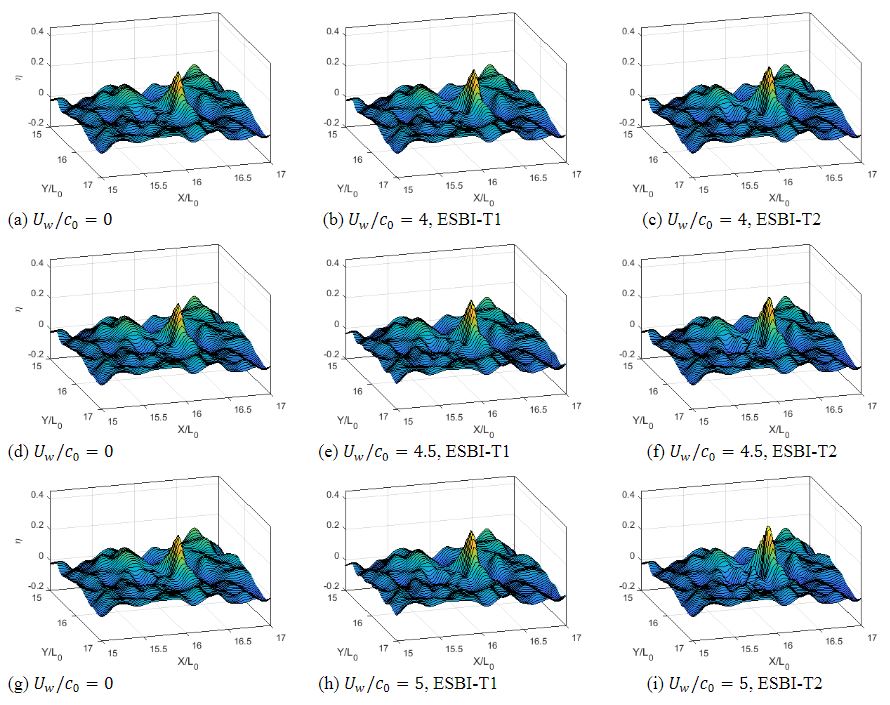 Conventional approaches are not desired due to i) there are concerns over computational efficiency for CFD models, and ii) spectral wind wave models cannot describe the individual wave incident because of their phase-averaged assumption. Therefore, we developed the more advantageous ESBI model for this purpose. It is not only capable of simulating realistic random seas based on phase-resolved and fully-nonlinear theories, but also is computationally efficient.
Conventional approaches are not desired due to i) there are concerns over computational efficiency for CFD models, and ii) spectral wind wave models cannot describe the individual wave incident because of their phase-averaged assumption. Therefore, we developed the more advantageous ESBI model for this purpose. It is not only capable of simulating realistic random seas based on phase-resolved and fully-nonlinear theories, but also is computationally efficient.
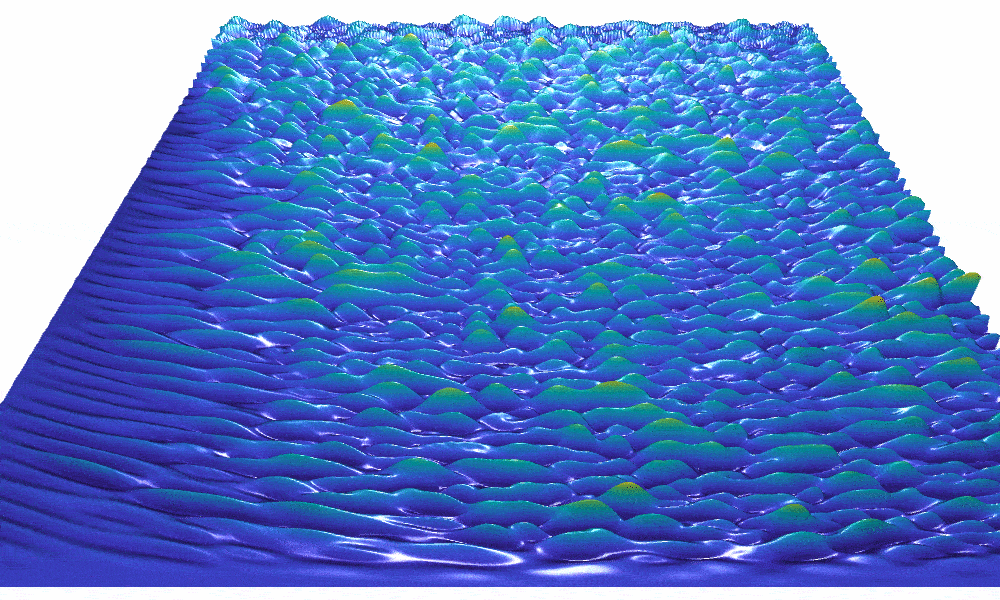 It is widely recognized that the directionality of wave propagation can reduce the probability of extreme waves. However, our researches point out that it is not completely true, especially when the waves are superimposed with obliquely opposed current. In our studies, the ESBI model is improved with the capability to simulate the fully nonlinear interactions between waves and horizontally shearing current.
It is widely recognized that the directionality of wave propagation can reduce the probability of extreme waves. However, our researches point out that it is not completely true, especially when the waves are superimposed with obliquely opposed current. In our studies, the ESBI model is improved with the capability to simulate the fully nonlinear interactions between waves and horizontally shearing current.
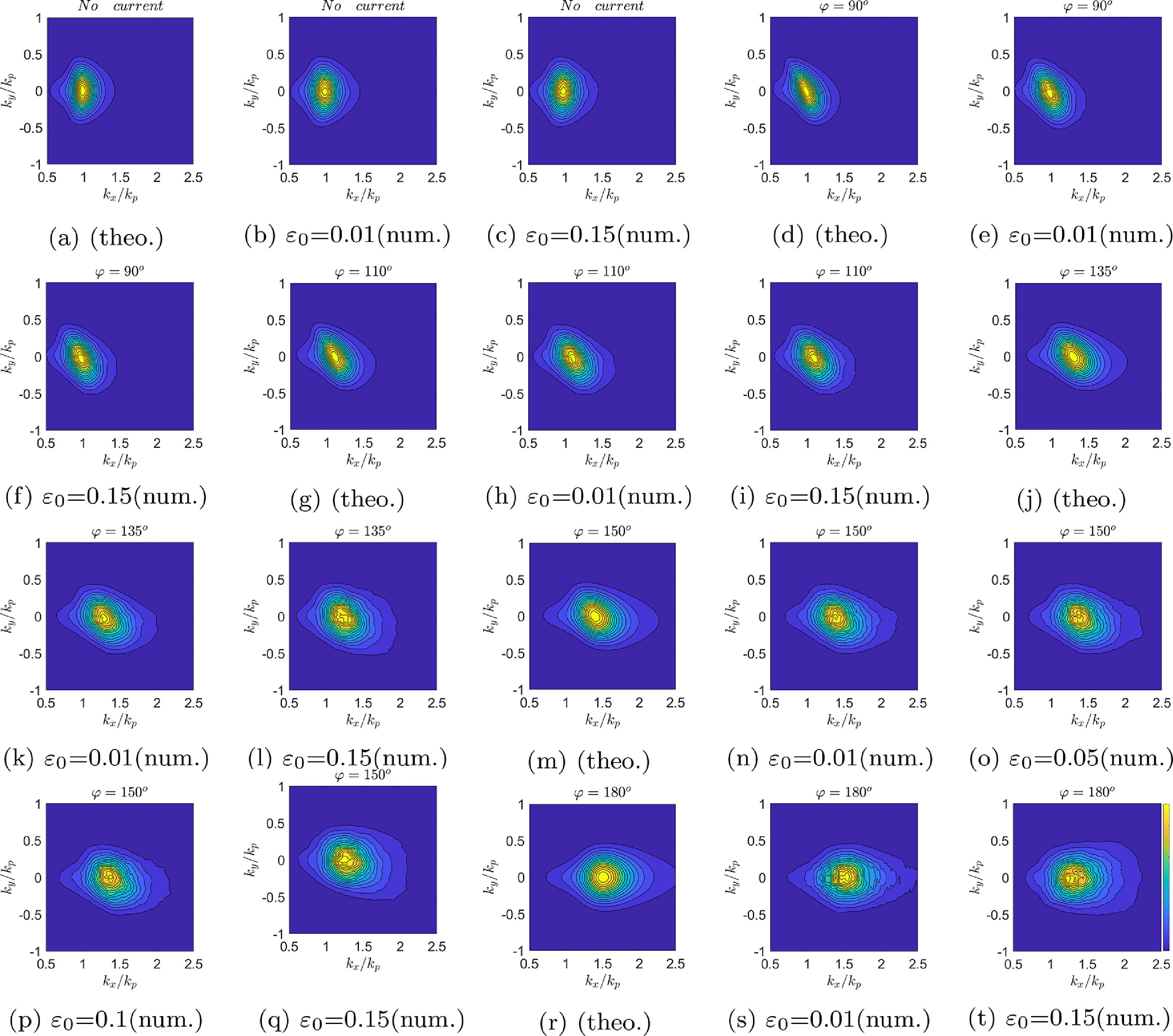 Our results show that the probability of extreme waves is significantly enhanced with adverse current in presence. The deterministic characteristics, such as the average shape of the extreme waves, exhibit substantial differences from those without the effects of current.
Our results show that the probability of extreme waves is significantly enhanced with adverse current in presence. The deterministic characteristics, such as the average shape of the extreme waves, exhibit substantial differences from those without the effects of current.
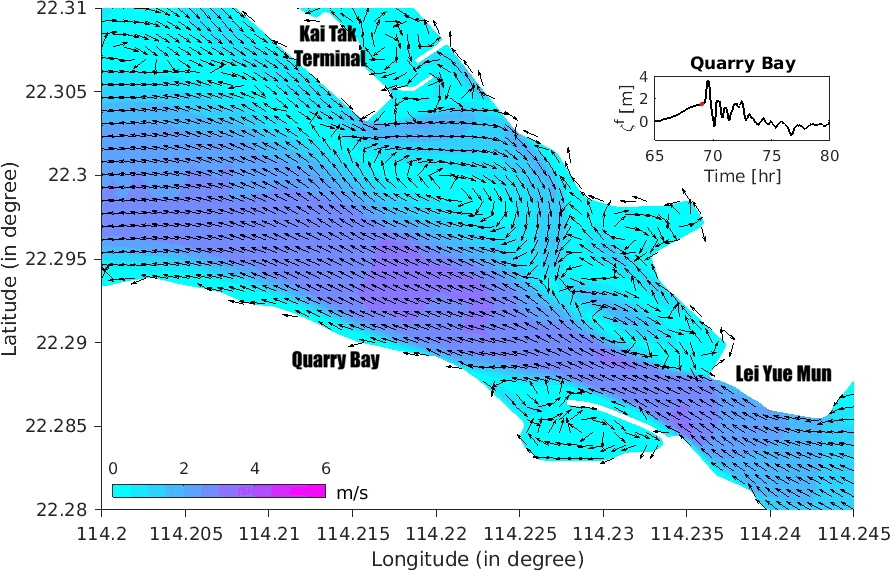 Intensified activities of tropical cyclones in the Western North Pacific have imposed increasing threats to coastal cities in the context of global climate change. A storm surge superimposed with astronomical high tide, i.e., a storm-tide event, often causes severe flooding in many coastal cities in South China Sea (SCS) region. Meanwhile, the potential tsunami hazard associated with the megathrust in Manila subduction zone has become a serious concern in this region. These two kinds of coastal hazard have been studied independently in the past since they are caused by different physical mechanisms in nature. However, there is no scientific reason to rule out the possibility of concurrence of a storm-tide-tsunami event, which is admittedly rare.
Intensified activities of tropical cyclones in the Western North Pacific have imposed increasing threats to coastal cities in the context of global climate change. A storm surge superimposed with astronomical high tide, i.e., a storm-tide event, often causes severe flooding in many coastal cities in South China Sea (SCS) region. Meanwhile, the potential tsunami hazard associated with the megathrust in Manila subduction zone has become a serious concern in this region. These two kinds of coastal hazard have been studied independently in the past since they are caused by different physical mechanisms in nature. However, there is no scientific reason to rule out the possibility of concurrence of a storm-tide-tsunami event, which is admittedly rare.
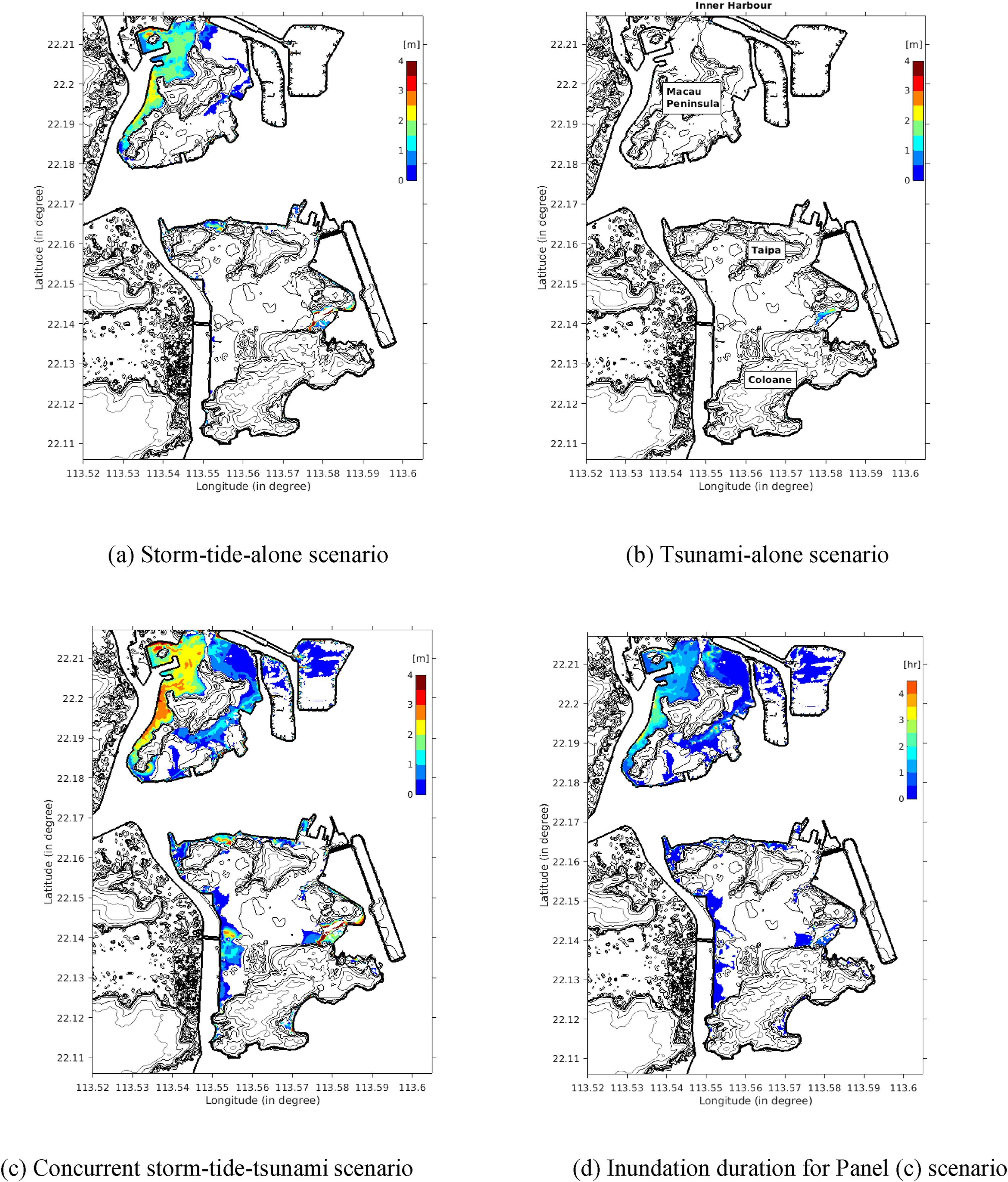 This study simulates a group of synthetic events assuming that tsunami waves are generated by a Mw=9 earthquake in the Manila subduction zone during a typhoon, which has the same characteristics as the 2017 Typhoon Hato. A numerical model package originally developed for storm-tide calculation has been modified to simulate a concurrent storm-tide-tsunami event. A variety of scenarios are considered as the tsunamis are superimposed at different phases of the storm-tide event. Their compound impacts on Macau and Hong Kong in Pearl River Delta, China, are investigated. The worst-case scenarios have been identified at Macau and Hong Kong, respectively. It is concluded that for coastal protection and hazard mitigation planning in this region, these extreme situations need to be considered. A fully coupled numerical model package is now available for conducting such studies.
This study simulates a group of synthetic events assuming that tsunami waves are generated by a Mw=9 earthquake in the Manila subduction zone during a typhoon, which has the same characteristics as the 2017 Typhoon Hato. A numerical model package originally developed for storm-tide calculation has been modified to simulate a concurrent storm-tide-tsunami event. A variety of scenarios are considered as the tsunamis are superimposed at different phases of the storm-tide event. Their compound impacts on Macau and Hong Kong in Pearl River Delta, China, are investigated. The worst-case scenarios have been identified at Macau and Hong Kong, respectively. It is concluded that for coastal protection and hazard mitigation planning in this region, these extreme situations need to be considered. A fully coupled numerical model package is now available for conducting such studies.
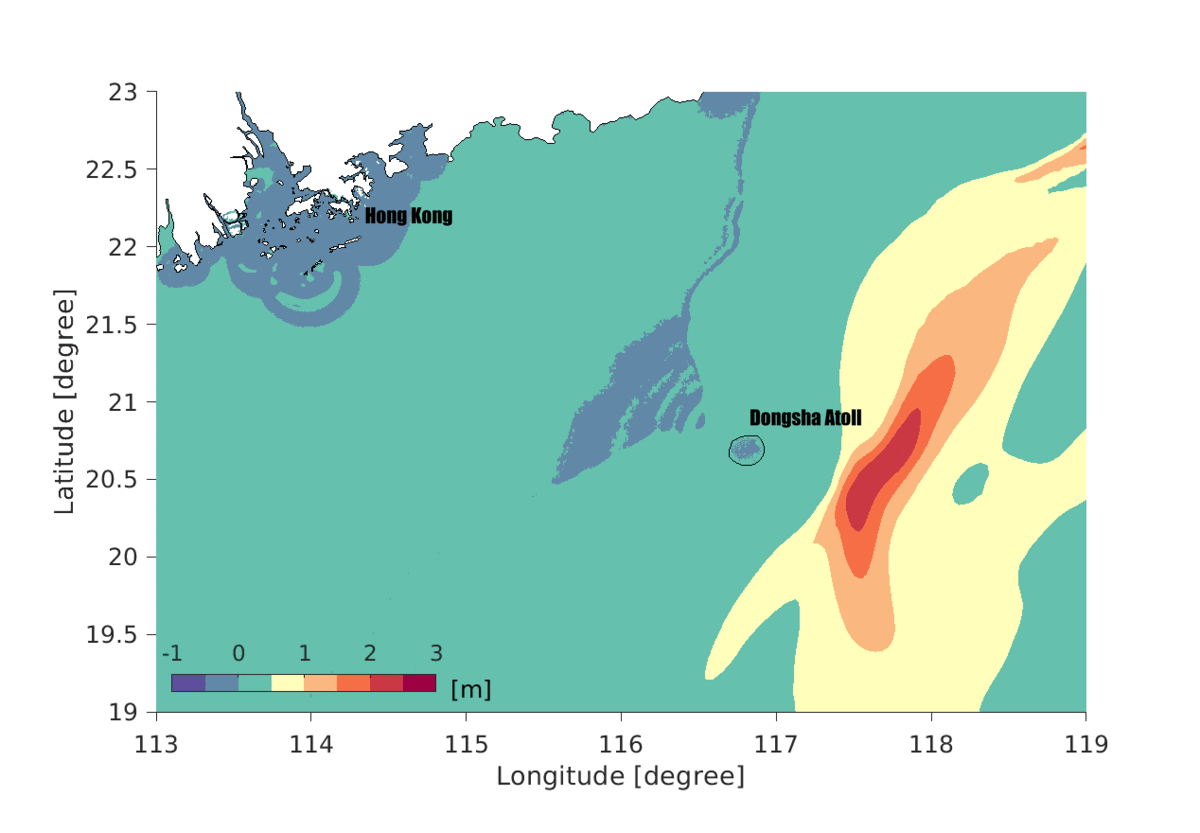 Tsunamis induced by megathrust in Manila subduction zone impose alarming threats to the coastal cities in northern South China Sea (SCS), and risk assessment of tsunami hazards in this region becomes demanding. One distinguishable geographic feature in this region is Dongsha Atoll, which situates between the tsunami source zone and China coastline. This study discusses the role of the Dongsha Atoll in modifying the tsunami impacts through numerical simulations of a group of synthetic tsunami events with Mw = 9.
Tsunamis induced by megathrust in Manila subduction zone impose alarming threats to the coastal cities in northern South China Sea (SCS), and risk assessment of tsunami hazards in this region becomes demanding. One distinguishable geographic feature in this region is Dongsha Atoll, which situates between the tsunami source zone and China coastline. This study discusses the role of the Dongsha Atoll in modifying the tsunami impacts through numerical simulations of a group of synthetic tsunami events with Mw = 9.
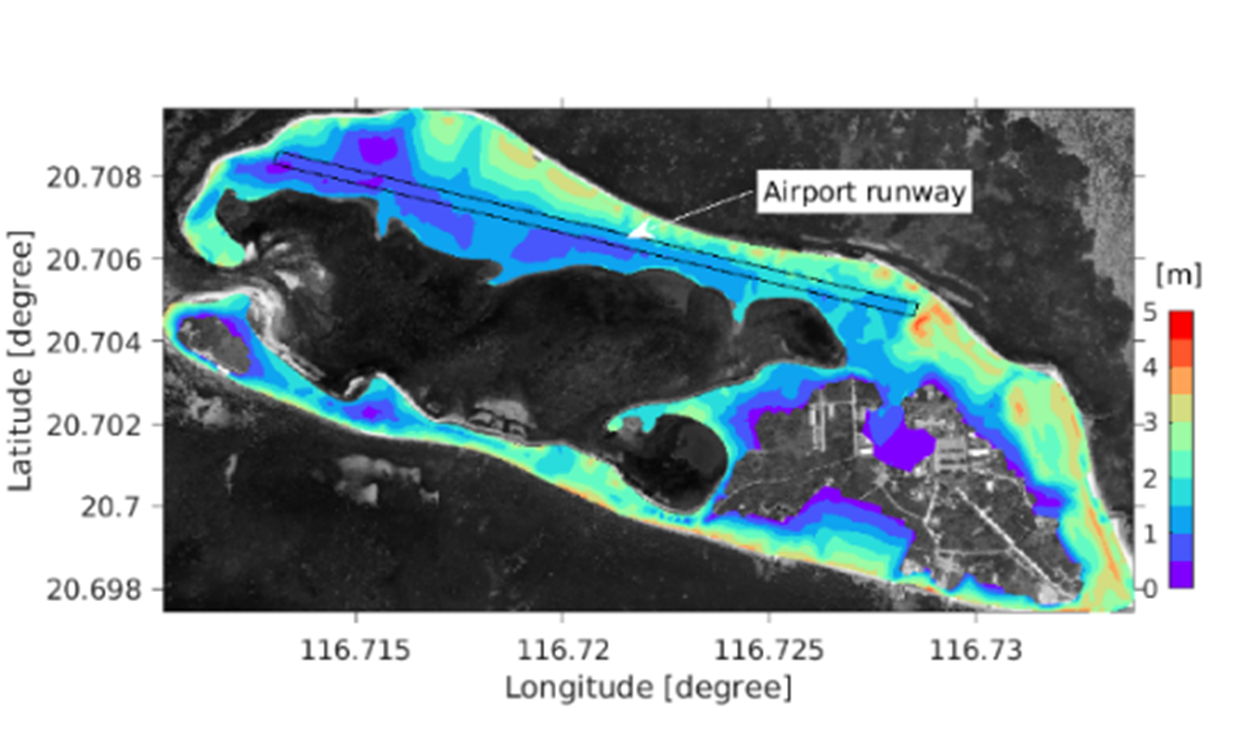 Our results show that a large amount of tsunami wave energy/momentum can be entrapped by the lagoon and slowly radiated to the ocean. The interaction between the tsunamis and the Atoll will lead to severe flooding on the Dongsha Island on the west bank of the Atoll. However, the peak water levels behind the Atoll and at the selected mainland coastal sites are reduced, indicating that the Dongsha Atoll can offer some degree of protection for the region in its behind.
Our results show that a large amount of tsunami wave energy/momentum can be entrapped by the lagoon and slowly radiated to the ocean. The interaction between the tsunamis and the Atoll will lead to severe flooding on the Dongsha Island on the west bank of the Atoll. However, the peak water levels behind the Atoll and at the selected mainland coastal sites are reduced, indicating that the Dongsha Atoll can offer some degree of protection for the region in its behind.
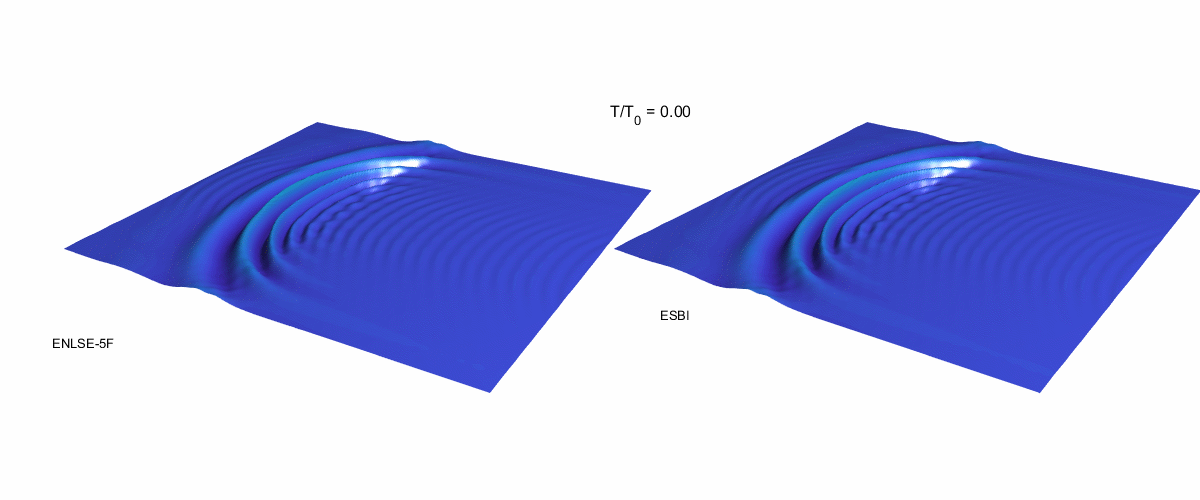 A hybrid model for simulating random seas on a large temporal and spatial scale is proposed. It is formed by combining the derived fifth order Enhanced Nonlinear Schrödinger Equation and the Enhanced Spectral Boundary Integral (ESBI) method. The numerical techniques and algorithm for coupling the selected models on time scale are suggested. Using the algorithm, the switch between the selected models during the computation is triggered automatically according to the strength of wave nonlinearities.
A hybrid model for simulating random seas on a large temporal and spatial scale is proposed. It is formed by combining the derived fifth order Enhanced Nonlinear Schrödinger Equation and the Enhanced Spectral Boundary Integral (ESBI) method. The numerical techniques and algorithm for coupling the selected models on time scale are suggested. Using the algorithm, the switch between the selected models during the computation is triggered automatically according to the strength of wave nonlinearities.
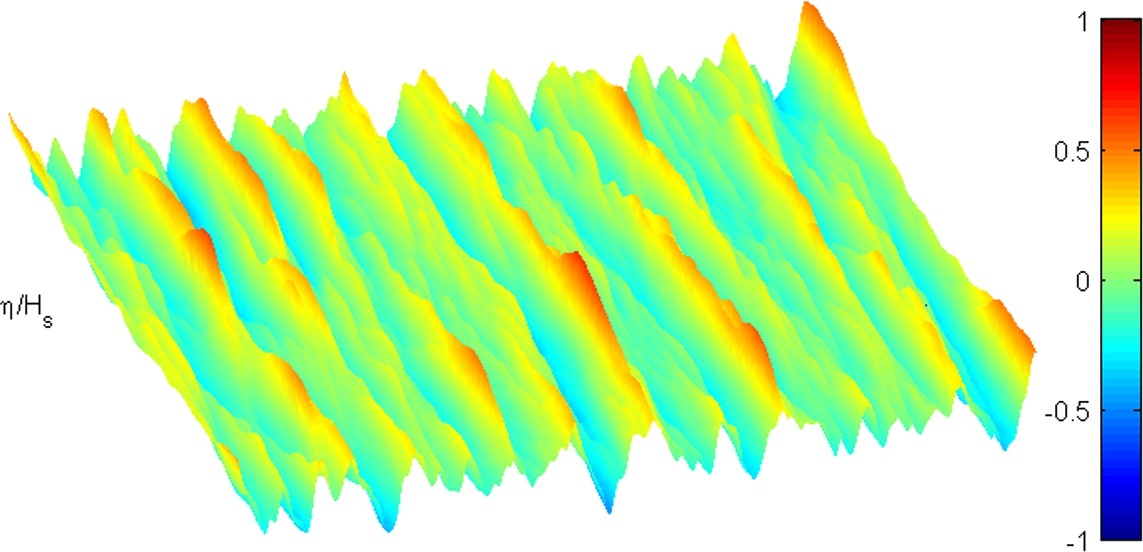 Numerical tests are carried out and the results indicate that this hybrid model could simulate random ocean waves both accurately and efficiently. In some cases discussed, the hybrid model is more than 10 times faster than just using the ESBI method, and it is also substantially faster than other methods reported in the literature.
Numerical tests are carried out and the results indicate that this hybrid model could simulate random ocean waves both accurately and efficiently. In some cases discussed, the hybrid model is more than 10 times faster than just using the ESBI method, and it is also substantially faster than other methods reported in the literature.